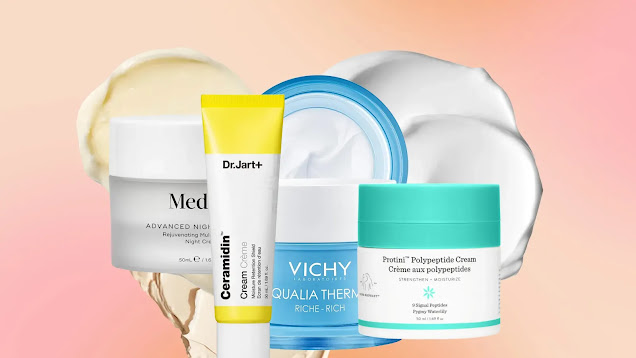
Can hydroquinone and azelaic acid be used together?
If you’ve been around skincare for a while, you probably have a clearer idea of what azelaic acid and hydroquinone are and how they benefit your skin. If you’re a little confused right now, don’t worry because I’m going to explain how each powerful function works on your skin.
However, the question that arises is whether it’s okay to use hydroquinone and azelaic acid together. Let’s explore this further and learn more about how these ingredients work together, or if they even work together.
What is Azelaic Acid?
Azelaic acid is a natural acid that is typically derived from grains like wheat, rye, and barley. It has anti-inflammatory and antibacterial properties, making it a highly effective ingredient for fighting oily and acne-prone skin. It penetrates deep into the skin to fight the buildup of bacteria, excess sebum, dirt, debris, and impurities, all of which can lead to clogged pores and breakouts. Azelaic acid can effectively reduce blemishes and breakouts while providing clear skin. This probably explains why azelaic acid is a top choice among dermatologists when prescribing products to treat acne and problem skin.
You’ll also find that azelaic acid is also able to treat rosacea and other conditions that cause inflammation and redness in the skin due to its anti-inflammatory properties. This gives azelaic acid unique properties as it can treat both acne and rosacea, two skin problems that often affect completely different skin types.
If you want to learn more about azelaic acid and its effects on the skin, read our dedicated blog post.
What is hydroquinone?
A well-known skin lightener with a long history, there was some debate about its safety for the skin. Fortunately for all of us, these issues were resolved in the early 80s, making it a popular ingredient for treating hyperpigmentation, dark spots, and sunburn.
Hydroquinone bleaches the skin by reducing the number of melanocytes, which are responsible for producing melanin. By preventing the formation of melanocytes on the skin, pigmentation is prevented from getting worse. By controlling the amount of melanin that reaches the surface, the skin tone appears brighter and more even. Hydroquinone is known to be very effective and can improve skin tone by reducing acne scars, age spots, melasma, freckles, and inflammatory spots.
Due to the variety of ingredients available, it is important (as with all skincare ingredients) to seek the advice of a doctor or dermatologist to determine if the ingredient can be safely incorporated into your daily skincare routine.
Can hydroquinone and azelaic acid be used together?
Yes, you certainly can. As confusing as it may seem, these two giants work well together. In fact, you’ll find that they complement each other and enhance their effects on the skin.
Before you apply them to your face, learn how to harness the benefits of each of them to improve the health and appearance of your complexion. If you have difficulty with product formulas, it’s best to consult a dermatologist or trained physician to find the best regimen for you and your skin.
What shouldn’t be mixed with hydroquinone?
When using hydroquinone, there are several factors to consider. As mentioned earlier, it is a highly effective ingredient that must be applied to the skin correctly to avoid unnecessary skin irritation.
Due to the exfoliating effects of hydroquinone, it is recommended not to mix it with chemical peels, such as alpha hydroxy acids (AHAs), such as the popular glycolic acid, lactic acid, and the most commonly used beta hydroxy acid, salicylic acid. Using too much of these acids can increase the risk of skin irritation, redness, flare-ups, and severe dryness.
Is Azelaic Acid as Effective as Hydroquinone?
This can be difficult to determine, especially since there are still several studies examining both ingredients.
Since hydroquinone is often used in high-percentage formulas, it is recommended that it be applied to specific areas of the face where it will be most effective. This is different from azelaic acid, which is found in a range of skin care products such as face cleansers, toners, and serums and moisturizers. All of these products can be applied to the skin with confidence, and they will work effectively on the surface of the skin without causing dryness, irritation, or other issues.
Deciding which one is better is ultimately up to you and your personal preferences. Whatever ingredient you add to your routine, just make sure to do a patch test 24 hours before applying the product to your skin.
What Can Be Mixed with Hydroquinone?
Ingredients such as azelaic acid, retinol, and tretinoin can all be used safely and effectively with hydroquinone. This may seem confusing due to the effectiveness of these ingredients I mentioned, but you’ll find that retinol, for example, can be combined with hydroquinone, allowing it to penetrate deeper into the skin. This is the same relationship between azelaic acid and hydroquinone, they enhance each other in their efficacy and ability to produce results on the skin.
In what order should I use hydroquinone?
Ideally, you should use hydroquinone at night and only once or twice a week initially, as this will help build up your skin’s tolerance for the active ingredients. If you use it at night, you’ll find that it can work on your face undisturbed without being exposed to free radicals, such as UV rays and pollution, all of which can cause oxidative stress and lead to long-term damage to the skin.
In the morning, follow up with a moisturizing formula enriched with hyaluronic acid, vitamin E, and other nourishing ingredients. Then, apply a sunscreen of SPF 30 or higher to ensure your skin is fully protected from sun damage.
Here’s more information on using azelaic acid and hydroquinone together. Don’t forget to visit us on Instagram.


